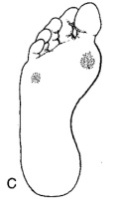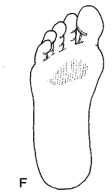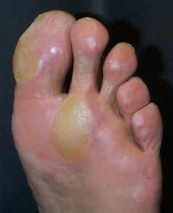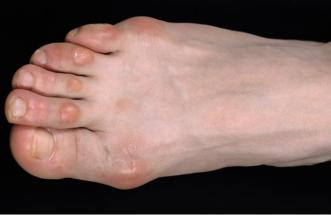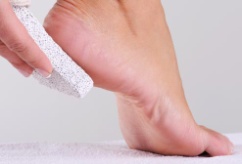
(BAHSc. CAT (c) Certified Athletic Therapist)
Calluses are a thickened area of skin that develops in response to friction, pressure or irritation over a long period of time. Callus formation on the bottom of your feet can tell a Certified Pedorthist a lot about your foot type and the way you walk. Callusing on the top or sides of the foot can tell us about how your shoe fits.
High-arched foot type, Rigid first toe
Dropped transverse arch (ball of foot), Adductory twist during gait
Calluses are extremely important to protect our hands and feet. Certain athletes must maintain their calluses to prevent injury; runners, martial artists, rowers, etc. If calluses are completely removed the athlete could experience blistering.
Corns
Corns are a specific type of callus and are classified into two categories:
Hard- occur on dry, flat surfaces, ex: hammer toes, hard corns occur on top of the joints due to rubbing on the inside of the shoe
Soft- occur in moist, cramped areas, ex: on the bottom of the foot between toes that are crowded together
Prevention
Especially for individuals with toe deformities, properly fit shoes are essential. Ensure shoes have adequate depth and length so as not to cramp the toes. Shoes should have a soft inner lining with minimal seams. If you are diabetic or have loss of sensation check your feet often for sores and monitor the extent of callusing.
Treatment
Daily moisturizing and use of a pumice stone will maintain healthy skin. If you choose to see an esthetician, ensure they do not remove calluses fully. “Baby-soft skin” will damage easily during activity. Seek the advice of a Chiropodist or Podiatrist, both are trained in skin and nail care and will help maintain your calluses appropriately.

